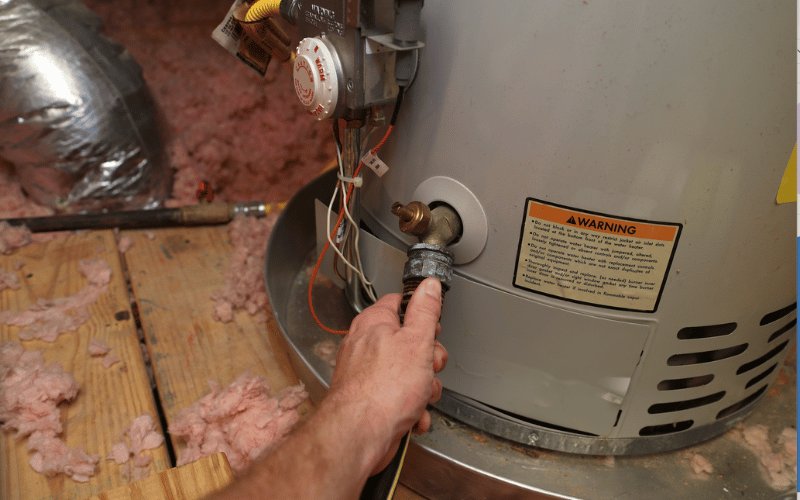Just about every person has got their own idea when it comes to Tips on Maintaining a Water Heater.

Warm water is essential for daily convenience, whether it's for a rejuvenating shower or cleaning dishes. To ensure your hot water system runs successfully and lasts longer, normal upkeep is key. This post provides functional ideas and understandings on how to maintain your home's hot water system to prevent disruptions and pricey repair services.
Introduction
Maintaining your home's hot water system may appear challenging, yet with a few basic actions, you can guarantee it runs smoothly for years to find. This guide covers every little thing from comprehending your warm water system to DIY upkeep ideas and knowing when to contact specialist help.
Relevance of Preserving Your Warm Water System
Routine upkeep not only expands the lifespan of your warm water system but additionally ensures it runs effectively. Neglecting maintenance can bring about reduced performance, higher power bills, and even early failing of the system.
Indicators Your Hot Water System Demands Maintenance
Knowing when your hot water system requires attention can stop significant problems. Watch out for indicators such as irregular water temperature, strange noises from the heating system, or corroded water.
Comprehending Your Warm Water System
Before diving right into maintenance jobs, it's useful to recognize the basic parts of your hot water system. Commonly, this includes the hot water heater itself, pipelines, anode rods, and temperature controls.
Month-to-month Upkeep Tasks
Regular month-to-month checks can assist catch small problems prior to they intensify.
Flushing the Water Heater
Flushing your hot water heater eliminates sediment buildup, boosting effectiveness and extending its life.
Monitoring and Replacing Anode Rods
Anode poles stop corrosion inside the container. Checking and replacing them when broken is important.
Evaluating and Changing Temperature Setups
Adjusting the temperature level settings makes certain ideal efficiency and security.
DIY Tips for Maintenance
You can perform numerous maintenance tasks yourself to maintain your warm water system in top problem.
Looking for Leakages
On a regular basis check pipelines and connections for leaks, as these can bring about water damages and higher bills.
Testing Stress Relief Valves
Checking the stress safety valve ensures it functions properly and stops extreme pressure build-up.
Shielding Pipelines
Protecting hot water pipes reduces warmth loss and can conserve power.
When to Call an Expert
While DIY maintenance is advantageous, some concerns need expert knowledge.
Facility Problems Requiring Specialist Aid
Examples include significant leakages, electrical problems, or if your hot water heater is continually underperforming.
Regular Professional Upkeep Perks
Professional upkeep can include comprehensive inspections, tune-ups, and making certain conformity with safety criteria.
Conclusion
Normal upkeep of your home's warm water system is vital for performance, longevity, and expense financial savings. By following these ideas and knowing when to seek expert aid, you can guarantee a trusted supply of hot water without unforeseen disturbances.
How to Maintain an Instant Hot Water Heater
Before tinkering with your hot water heater, make sure that it’s not powered on. You also have to turn off the main circuit breaker and shut off the main gas line to prevent accidents. Also turn off the water valves connected to your unit to prevent water from flowing into and out of the appliance. 2. When you’re done, you have to detach the purge valves’ caps. These look like the letter “T” and are situated on either side of the water valves. Doing so will release any pressure that has accumulated inside the valves while at the same time avoid hot water from shooting out and burning your skin. 3. When the purge valves’ caps are removed, you have to connect your hosing lines to the valves. Your unit should have come with three hoses but if it didn’t, you can purchase these things from any hardware or home repair shops. You can also get them from retail stores that sell water heating systems. Read the user’s manual and follow it to complete this task properly. When the hosing lines are connected, open the purge port’s valves. 4. You should never use harsh chemical cleaners or solutions when cleaning your unit. Make use of white vinegar instead. It should be undiluted and you’ll probably use about 2 gallons. 5. Now flush your water heater. This task should probably take about 40 minutes. We can’t give you specific directions for this because the procedure is carried out depending on the type, model and brand of your heater. With that being said, refer to the user’s manual. 6. When you’re done draining the unit, you have to turn off the purge port valves again. Remove the hosing lines that you earlier installed on each of the water valves. Put the valve caps (purge port) back in their respective places and be very careful so as not to damage the rubber discs that are found inside these caps. 7. Now that everything’s back in place, check your user’s manual again to find out how to reactivate your water heating system. 8. Once it is working, turn one of your hot water faucets on just to let air pass through the heater’s water supply pipes. Leave the tap on until water flows smoothly out of it. https://www.orrplumbing.com/blog/2014/september/how-to-maintain-an-instant-hot-water-heater/

We were introduced to that editorial on What Kind of Maintenance Do Water Heaters Need? from a pal on our other web property. Sharing is caring. One never knows, you may be doing someone a favor. Thanks a lot for taking the time to read it.
Book Inspection